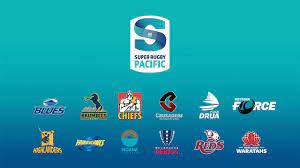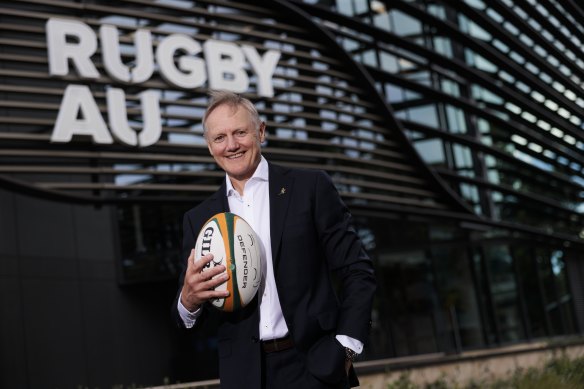Scheduled Website Maintenance
We’re currently in the process of moving to a new and improved server environment. During this transition, the website may experience brief interruptions or temporary outages.
We appreciate your patience while we complete this upgrade. Service will return to normal shortly, with improved performance and reliability.
Thank you for your understanding.
Welcome to the end of the Rugby Championship and that brief period of review thinking about “What ifs?” To be fair, I’m ok with how things have gone and while I would’ve loved seeing Argentina beat the Boks and NZ win, it wasn’t to be. For me the best part was watching the Wallabies grow after the changes from last year. TBH I pretty much expected Australia to struggle and as I mentioned at the start, I’d be happy seeing incremental growth and improvement from the team and after the debacle that was Eddie Jones. I saw some growth and improvement, so I’m relatively happy with the team. While I think there are still some areas that need work, generally the team has gone in the right direction for me.
Referee Corner
Not a lot from the weekend although there seems to be a few thinking that the TMO and officials missed a few knock ons and the like in the AB v Wallabies game. There was also some discussion about the Boks getting let off a bit in the scrums by BOK against the Argies. I actually agree with this last one a bit – I’m biased so I didn’t see any of those knock ons in our game – and I thought the Bok LH was both boring in and lifting but as I’ve said before we get such a distorted view of things through the TV we can’t really be sure and have to trust that the referee sees things we’re missing.
One discussion we did have was about the tackle and when the jackle is able to go for the ball and what rights they have. It’s actually an interesting discussion and one of the main points is that the law doesn’t mention the word jackle. In a tackle you have the tackled player, the tackler(s) and others. The jackler is mentioned in the Law Definitions and is defined as “The jackler is the first arriving team-mate of the tackler at the tackle. They must remain on their feet to contest directly onto the ball. If previously involved in the tackle, they must first clearly release the ball carrier before contesting for the ball.”
Law 14.8 a – e provides the “others” with what they can and can’t do in a tackle. For the role of what is termed the jackle this includes (b) “remain on their feet when they play the ball.” (c) “Arrive at the tackle from the direction of their own goal line before playing the ball.” Law 14.9 says that a player who gains possession; (a) Must play it immediately, by moving away, or by passing or kicking the ball. (b) Must remain on their feet, and not go to ground at or near the tackle unless tackled by the opposition. (c) May be tackled, provided the tackler does so from the direction of their own goal line. The law about continuing to hold the ball once they have their hands on it is actually part of the ruck laws and not the tackle laws. So if a ruck isn’t formed then the jackle can’t hold the ball in. Law 15.11 says “Once a ruck has formed, no player may handle the ball unless they were able to get their hands on the ball before the ruck formed and stay on their feet.” So by definition, if you got your hands on the ball before the ruck was formed you don’t need to let go when the ruck is formed.
In a tackle the tackler must; “immediately release the ball and ball carrier” and “immediately move away from the tackled player and ball”. So they can’t go for the ball until they get on their feet and then approach it from the direction of their own goal line. The tackled player must immediately; “Make the ball available so that play can continue by releasing, passing or pushing the ball in any direction except forward. They may place the ball in any direction.” The last sentence means they can reach out and score if tackled short as long as they don’t push the ball along the ground. The discussion yesterday was around the sequence and whether the jackler had to allow the tackled player to play the ball before attempting to pick it up. For me, there is nothing in the law that says this must occur and I have always applied this in a way that if you are a jackler you can go for the ball as soon as you arrive and that your action on getting hold of the ball prevents the tackled player from immediately playing it and so they must release it. This is the basis of a jackler winning a penalty. The only other part of this is that a couple of years ago World Rugby put out a Law clarification where they said the jackler must be attempting to lift the ball and can’t just go in and hold it down to win the penalty. This is where I struggle when a jackler has only one hand on the ball and is awarded a penalty. For me one hand on the ball is unlikely to be in control and attempting to lift it; however, many referees see this differently and allow it.
So what this means is that if you are the tackled player you need to play the ball as soon as you are tackled. If the jackler gets onto the ball and is attempting to lift it and you can’t break his hold on the ball you must let go or be penalised. If you’re the jackler as soon as you are there on your feet you can go for the ball and attempt to hold it, as long as your weight remains on your feet. If you continue to have possession you don’t need to let go once the ruck is formed, however if you lose possession you can’t then go for it again. You get one chance.
World Club Cup, ANZAC Super Round on the tables as new Super Rugby CEO Mesley looks to guide competition into future

Reported here by Nathan W on rugby.com.au, new Super Rugby CEO Jack Mesley stressed there was no ‘silver bullet’ that was going to drive the growth of Super Rugby. Rather, the CEO was focused on sustained growth and capitalising on the best opportunities for the competition. “What we need to focus on is bedding down a strategy and making 100 good decisions and driving from year on year growth,” he said. “My observation is that everyone’s looking for a silver bullet to magically appear that that changes the dynamic overnight. I don’t think that exists… What we need to focus on is bedding down a strategy and making 100 good decisions and driving from year on year growth.” He further stated that there are three key pillars that will drive any future decisions; Improve the quality of athlete and competition, Generate more fan interest and Be commercially viable.
Other things being looked at include the creation of a World Club Championship between the best sides in the world and adding a Super Round as part of a Blockbuster Anzac weekend that also has a Bledisloe match.
Some interesting concepts here and it’s good to see they’re looking at different options for the competition. I’m not sure if a full home and away has been looked at (and discarded) or just not mentioned and that’s something I’d like to see. Having a Bledisloe on the same weekend as a super round would be interesting and would require some tactical application for teams who lose more players to the international sides.
I think it’s great that they’re looking at different things and let’s hope they do get to invigorate the competition and increase the fan base. I do think that Australian teams need to win more games for the interest here to pick up so let’s hope that happens as well. Just not against my Canes.
What have we learnt in Schmidt’s first six months in charge of the Wallabies?

A good article here by Jonathan Drennan in the SMH looks at the Wallabies first 6 months under Joe Schmidt. After agreeing to take the job, Schmidt’s rationale was simple. “I’m desperate for the Wallabies to be competitive and, if I can help, that’s why I’m here,” he said. It sounded simple, but after the wreckage of Eddie Jones’ tenure, it was just what RA wanted to hear.
Schmidt was arguably taking on the biggest coaching challenge in world rugby. After nine Tests in charge for four wins, he has at least brought a competitive edge to the side, but there remains significant room for improvement.
Firstly, some depth has been built. Schmidt has made 15 players new Wallabies, the most since 1962. The newcomers have varied in terms of success, but Schmidt will be pleased with how comfortable most have looked in the Wallabies jersey and, consequently, the increased competition for places across the squad. While there will always be debate about the merits, or not, of different players and whether he should’ve gone offshore or not, I think the Wallabies have improved under Joe and his team and I think they’re heading in the right direction. So I’m happy.
Name and position of debutants
- Angus Blyth – lock
- Jeremy Williams – lock
- Josh Canham – lock
- Carlo Tizzano – flanker
- Luke Reimer – flanker
- Seru Uru – no 8
- Charlie Cale – no 8
- Alex Hodgman – prop
- Isaac Kailea – prop
- Josh Nasser – hooker
- Tom Lynagh – five-eighth
- Dylan Pietsch – wing
- Max Jorgensen – wing/fullback
- Darby Lancaster – wing
- Josh Flook – centre
- Hamish Stewart – centre

